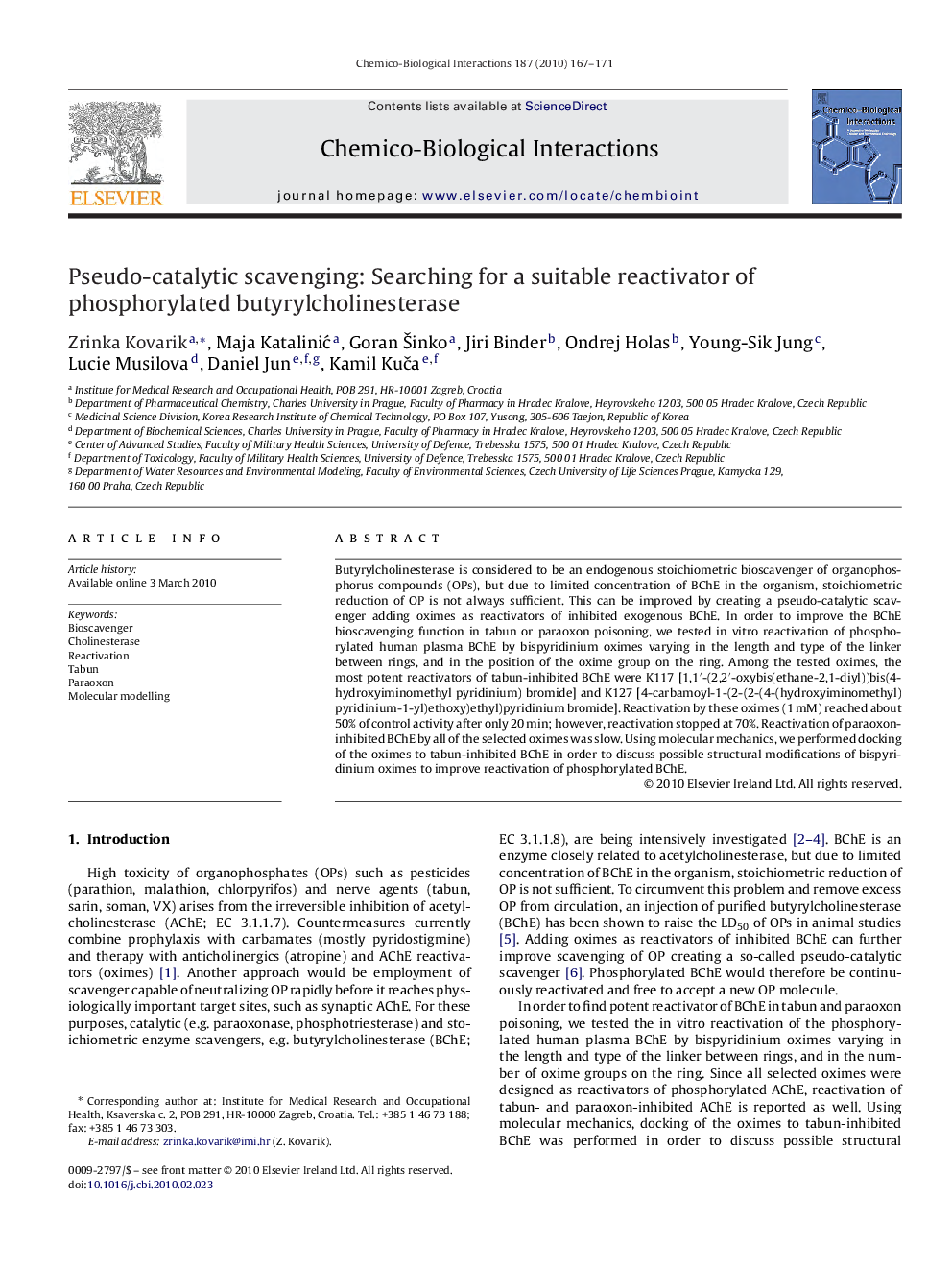| Article ID | Journal | Published Year | Pages | File Type |
|---|---|---|---|---|
| 2581773 | Chemico-Biological Interactions | 2010 | 5 Pages |
Butyrylcholinesterase is considered to be an endogenous stoichiometric bioscavenger of organophosphorus compounds (OPs), but due to limited concentration of BChE in the organism, stoichiometric reduction of OP is not always sufficient. This can be improved by creating a pseudo-catalytic scavenger adding oximes as reactivators of inhibited exogenous BChE. In order to improve the BChE bioscavenging function in tabun or paraoxon poisoning, we tested in vitro reactivation of phosphorylated human plasma BChE by bispyridinium oximes varying in the length and type of the linker between rings, and in the position of the oxime group on the ring. Among the tested oximes, the most potent reactivators of tabun-inhibited BChE were K117 [1,1′-(2,2′-oxybis(ethane-2,1-diyl))bis(4-hydroxyiminomethyl pyridinium) bromide] and K127 [4-carbamoyl-1-(2-(2-(4-(hydroxyiminomethyl) pyridinium-1-yl)ethoxy)ethyl)pyridinium bromide]. Reactivation by these oximes (1 mM) reached about 50% of control activity after only 20 min; however, reactivation stopped at 70%. Reactivation of paraoxon-inhibited BChE by all of the selected oximes was slow. Using molecular mechanics, we performed docking of the oximes to tabun-inhibited BChE in order to discuss possible structural modifications of bispyridinium oximes to improve reactivation of phosphorylated BChE.
